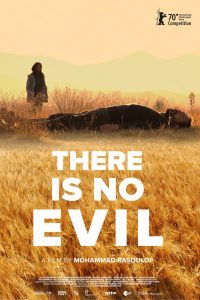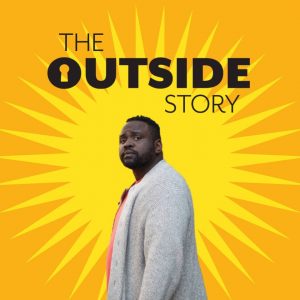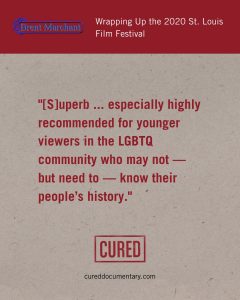
Thursday, December 31, 2020
A First for Yours Truly!

Friday, December 25, 2020
‘The Dark Divide’ chronicles the process of taking flight
“The Dark Divide” (2019 production, 2020 release). Cast: David Cross, Debra Messing, David Koechner, Kimberly Guerrero, Gary Farmer, Carmen Esposito, Patterson Hood, Dyami Thomas, Olivia Ritchie, Shelly Lipkin, Tom Doupe, Harvest Moon. Director: Tom Putnam. Screenplay: Tom Putnam. Book: Robert Michael Pyle, Where Bigfoot Walks: Crossing the Dark Divide. Web site. Trailer.
Launching a new endeavor can be a daunting prospect, especially if we lack the practical experience and know-how for proceeding. However, if we’re to elevate our knowledge, wisdom and insights to new heights, we must take the initiative at some point to pursue the goal in question. The rewards of doing so can be immeasurable, enabling us to become experts in our fields that mere study from a distance alone cannot accomplish. Such was the case for a scientist who upped his game with a bold undertaking, an experience chronicled in the new, fact-based wilderness saga, “The Dark Divide.”
When lepidopterist Dr. Robert Pyle (David Cross) initially contemplates a field study to find uncatalogued and endangered species of butterflies and moths in Washington’s Gifford Pinchot National Forest – one of the most remote and undeveloped wildlife areas in the nation – he’s torn about what to do. As much as he would like to make the journey, he’s guilt-ridden about leaving behind his wife, Thea (Debra Messing), who’s courageously but unsuccessfully battling ovarian cancer. Despite her illness, however, she urges him to pursue his dream, to get away from the stress of caring for her, which she can see is clearly taking a toll on him.
[caption id="attachment_11979" align="aligncenter" width="350"]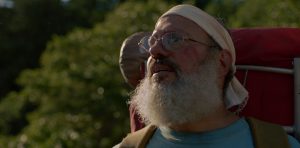 Lepidopterist Dr. Robert Pyle (David Cross) embarks on a journey to catalog unknown and endangered butterfly and moth species in Washington’s remote Gifford Pinchot National Forest in the new, fact-based saga, “The Dark Divide.” Photo courtesy of The Dark Divide/Public House Films.[/caption]
Lepidopterist Dr. Robert Pyle (David Cross) embarks on a journey to catalog unknown and endangered butterfly and moth species in Washington’s remote Gifford Pinchot National Forest in the new, fact-based saga, “The Dark Divide.” Photo courtesy of The Dark Divide/Public House Films.[/caption]
In making plans for the project, though, it becomes apparent that he’s woefully unprepared for the trip to the foreboding territory that even locals look upon with a healthy respect, calling the area “the Dark Divide.” He’s basically a neophyte when it comes to camping, and he has virtually no wilderness experience for dealing with things like the elements, bears and lack of a support network. Two of his professorial colleagues (Shelly Lipkin, Tom Doupe) pointedly remind him of this, too, asking him if he’s truly ready for what he’ll be up against. Then there’s Thea’s worsening condition, which prompts Robert to reconsider this undertaking – that is, until she makes the decision for him. And, with the subsequent awarding of a prestigious research grant not long after her passing, the deal is sealed for the intrepid professor to go butterfly hunting.
Now on his own, Robert embarks on his journey in almost Quixotic fashion, not knowing what to expect – and even less prepared for knowing how to respond. He initially experiences some significant stumbles, like losing his butterfly net (being left without it thus providing a fitting metaphor for the state of his life at the time). He also makes some beginning hiker’s mistakes, like starting out on his journey with a pair of boots that aren’t already broken in. Nevertheless, despite these foibles, he seems to adapt to his new surroundings reasonably well, even if not always as planned or hoped for.
Robert indeed accomplishes what he set out to do, discovering a number of new butterfly and moth species. But, more importantly, the trip provides him with an opportunity to reflect upon his life with his beloved (told through a series of flashbacks) and how to get on without her. He takes time to look inward, introspectively assessing who he is and finding himself growing in ways he likely never imagined. It’s as if he’s going through a metamorphosis of his own, finally getting a chance to do for himself what his lepidopteran companions innately consider second nature. He gains a new appreciation for his winged subjects, at last growing his own airworthy appendages as he seeks to symbolically take flight in his own unique way.
[caption id="attachment_11980" align="aligncenter" width="350"] Washington’s remote Gifford Pinchot National Forest, one of the most undeveloped wilderness areas in the nation, provides the backdrop for Professor Robert Pyle (David Cross) in his search for new butterfly and moth species in director Tom Putnam’s “The Dark Divide,” now available for streaming online. Photo courtesy of The Dark Divide/Public House Films.[/caption]
Washington’s remote Gifford Pinchot National Forest, one of the most undeveloped wilderness areas in the nation, provides the backdrop for Professor Robert Pyle (David Cross) in his search for new butterfly and moth species in director Tom Putnam’s “The Dark Divide,” now available for streaming online. Photo courtesy of The Dark Divide/Public House Films.[/caption]
Mind you, even though Robert is by himself much of the time, he’s by no means alone. He encounters an array of colorful characters along the way, all of whom help contribute to his personal growth and development, including a skeptical supply store clerk (Carmen Esposito) who questions the wisdom of Robert’s venture, a Girl Scout troop more accustomed to wilderness ways than he is, and a disgruntled logging crew chief (Gary Farmer) who despises the local “tree huggers,” prompting the professor to keep mum about his preservationist leanings. He also comes upon evidence of phenomena outside his everyday experience, such as an oversized footprint that local Native Americans (Kimberly Guerrero, Dyami Thomas, Harvest Moon) matter-of-factly recognize as a hallmark of Bigfoot, a being they’re convinced is absolutely real, a contention that challenges (and helps to reframe) Robert’s iron-clad scientific worldview.
The further Robert journeys, the more “primal” his odyssey becomes. He strips away everything but the bare essentials both literally and figuratively, forcing him to come face to face with himself and his life. He ends up crawling through a lava tube clad only in his underwear, a painful experience that signifies his own rebirth. It’s an ordeal he manages to survive – and pushes him to ask himself, “What do I want for my new life?” It’s a question that only he can answer, but at least he recognizes the opportunity it affords, something we should all be so fortunate enough to experience and take advantage of when it presents itself.
It’s somewhat ironic how we can become so-called experts in a particular area purely on an intellectual level without ever engaging in firsthand practical experiences with our subject matter. Robert, for example, is quite knowledgeable about the study of lepidoptery, but he appears to have done most of his work in classrooms and laboratories; he’s never really engaged in the hands-on field work that allows him to know what it’s like to be the subjects he’s studying. When his life is turned upside-down, though, there’s nothing to hold him back from doing so, and so he plans to proceed with an undertaking to find out for himself.
[caption id="attachment_11981" align="aligncenter" width="350"]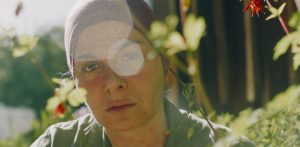 Thea Pyle (Debra Messing), the supportive spouse of an acclaimed lepidopterist, encourages him to go butterfly hunting in the wilderness to give him a break from the ongoing care he provides her in her battle against ovarian cancer in the new fact-based saga, “The Dark Divide.” Photo courtesy of The Dark Divide/Public House Films.[/caption]
Thea Pyle (Debra Messing), the supportive spouse of an acclaimed lepidopterist, encourages him to go butterfly hunting in the wilderness to give him a break from the ongoing care he provides her in her battle against ovarian cancer in the new fact-based saga, “The Dark Divide.” Photo courtesy of The Dark Divide/Public House Films.[/caption]
For whatever reason, Robert has not pursued such a venture before. Now, however, with his other obligations fulfilled, he has an opportunity to make it happen. He thus sets in motion the process of setting up his field study, and, as the elements fall into place, he’s able to proceed. The reason those project components come together is because he now believes he can pull this off, despite his obvious lack of practical experience. Those beliefs, in turn, draw the resources to him that he needs (such as the study grant), a prime example of conscious creation (also known as the law of attraction) at work, the philosophy that maintains we tap into our thoughts, beliefs and intents to manifest the reality we experience – even if it means taking us into highly uncharted territory.
Like the butterfly that morphs into its celebrated form from that of a mere caterpillar, Robert is about to do the same on his journey, even if he’s not entirely sure of how – or that – it’s going to happen. Fortunately for him, he experiences a number of synchronicities – those perfectly attuned “coincidences” that seemingly appear out of the blue just when we need them to provide us with exactly what we need at the moment. They enable his odyssey to unfold, taking him to where he needs to go, even if he doesn’t always know it at the time.
In the process, this allows Robert to rewrite his beliefs as a means to reshape his existence. He considers possibilities he hadn’t thought of before, especially in the area of expanding beyond established limitations. For instance, his encounter with evidence of Bigfoot – and its apparent validation by the Native Americans he meets – prompts the diehard scientist to think in terms he may have never previously contemplated. In fact, the real world counterpart of this fictionalized version of himself has since added study of this legendary cryptid to his work as a butterfly expert, quite a remarkable change indeed.
It’s interesting to see how Robert goes about this, too. In many respects, he approaches this endeavor with a sense of playfulness, allowing his inner goofball to emerge. Some may question the wisdom of this given the conditions of the quest he’s embarking upon. In fact, there are some situations that truly place him in peril, yet he doesn’t unduly panic (at least most of the time). He goes with the experience, because that’s what he’s drawn to him, something that he apparently recognizes on some level is meant to provide him with a necessary learning opportunity. Such circumstances give him a chance to expand his life experience and to learn certain life lessons, all of which contribute to the ongoing unfolding of his personal growth, development and metamorphosis – again, just like the winged subjects he studies.
[caption id="attachment_11982" align="aligncenter" width="350"] Loving partners Robert Pyle (David Cross, seated) and his wife, Thea (Debra Messing, standing), struggle to work through the dilemma of battling a devastating illness while trying to maintain a semblance of normality in “The Dark Divide.” Photo courtesy of The Dark Divide/Public House Films.[/caption]
Loving partners Robert Pyle (David Cross, seated) and his wife, Thea (Debra Messing, standing), struggle to work through the dilemma of battling a devastating illness while trying to maintain a semblance of normality in “The Dark Divide.” Photo courtesy of The Dark Divide/Public House Films.[/caption]
The upshot of this is that it allows Robert to go through a personal evolution and rebirth. And, in light of what he underwent prior to taking on this challenge, he’s in need of reinventing himself, of becoming Robert without Thea. Given how much he loved and cared for his wife, her death was a tremendous loss. But, in the wake of her transition, he’s still here and needs to build a new future for himself – something he can only do by reframing his destiny, an opportunity made possible by shifting his beliefs and the manifestations they enable.
Thanks to this experience, Robert comes to understand the conscious creation concept that everything is in a constant state of becoming, again mirroring the existence of the butterfly. And, also like the butterfly, it enables him to learn how to take flight, to spread his wings and truly soar in ways he never dreamed imaginable. That’s quite an aspiration – especially when one sees it fulfilled.
Filmmaker Tom Putnam’s fact-based chronicle of Dr. Robert Pyle’s odyssey encompasses a range of emotions, from laughter to tears to revelation, a picture whose story line particulars parallel films like “Wild” (2014). The professor’s experience in discovering himself while working through profound grief is inspiring and cathartic, qualities that many of us may find easy to appreciate. Though somewhat episodic at times, the overall narrative rings true to its mission and does so with whimsical humor, beautiful cinematography and an excellent score. Its greatest strength, however, lies in its performances, with Cross and Messing (who is barely recognizable here) easily turning in the best work of their careers. The film has been playing the festival circuit and had a brief theatrical run before becoming available for online streaming on a number of internet platforms.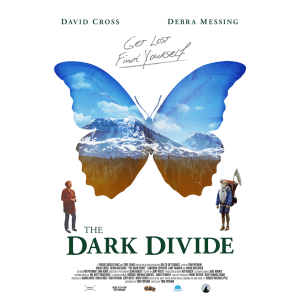
There comes a point in many of our lives when we’re faced with the choice of stretching or stagnating. The implications of each are often quite clear, too. But, even with that knowledge, we must take action – or purposely choose not to do so – to see them materialized. Making the decision and subsequently acting upon it may be challenging, even difficult. However, if we’re to move forward and realize advances in our lives, we must choose to forge ahead to see what grand opportunities await us – and avoiding regrets that we never chose to pursue them.
Copyright © 2020, by Brent Marchant. All rights reserved.
Monday, December 21, 2020
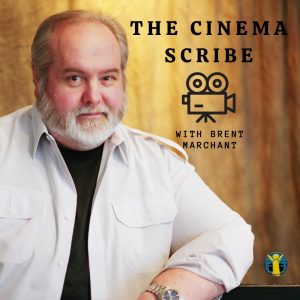
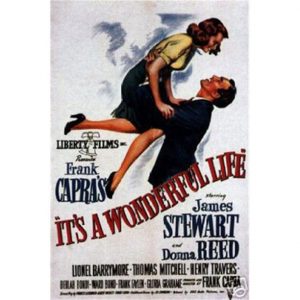



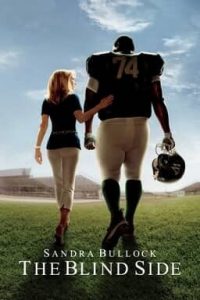
Thursday, December 17, 2020
Going Back to the Show!
Theaters may still be closed, but that needn’t stop us from going to the movies! Find out about some excellent new selections today, December 17, on the latest edition of The Good Media Network’s Frankiesense & More video podcast with yours truly and host Frankie Picasso. Tune in at 1 pm ET on Facebook Live by clicking here for a lively discussion of new releases worth seeing (and some worth avoiding). And, if you don’t see it live, catch it later on demand!
Wednesday, December 16, 2020
This Week in Movies with Meaning
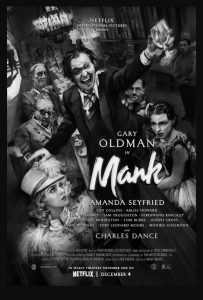
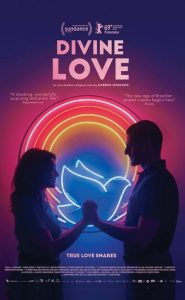
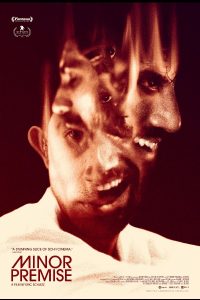

Tuesday, December 15, 2020
‘Minor Premise’ examines the many within the one
“Minor Premise” (2020). Cast: Sathya Sridharan, Paton Ashbrook, Dana Ashbrook, Nikolas Kontomanolis. Director: Eric Schultz. Screenplay: Justin Moretto, Eric Schultz and Thomas Torrey. Web site. Trailer.
It’s long been suspected that there’s much more going on inside our brains, minds and consciousness than most of us typically realize. What’s more, it’s become apparent that the complexities involved are far more involved than we generally understand. Learning how to harness this power could prove beneficial if tapped properly. But, if mishandled, we might also be opening a Pandora’s Box that we would have trouble once again closing. So it is in the insightful new sci-fi/smart horror thriller, “Minor Premise.”
Wouldn’t it be something if we could figure out a way to record our memories for playback whenever we wanted to see them? It’s a prospect with revolutionary potential. And that possibility has now become the work of a research neuroscientist, Ethan (Sathya Sridharan), who’s carrying out studies begun by his father, Paul (Nikolas Kontomanolis). He hopes that his findings will not only realize his goal, but surpass the legacy established by his paternal predecessor.
The intent behind this work, however, is to produce technology more meaningful than just giving the public a tool for on-demand strolls down memory lane. Ethan and his research associate, Malcolm (Dana Ashbrook), one of Paul’s former colleagues, hope to develop technology for deeper purposes. They believe it’s possible to create equipment that can be used to aid in areas like psychiatry, where recorded images of retrieved memories might be helpful in enabling patients to uncover sources of psychological blockages or perhaps even heal traumas. Imagine the implications.
However, in initial testing, the quality of the recorded memories has left much to be desired. The images have turned out blurry or obscured with overlaid distortions, making the recordings almost useless. In the next phase of the work, the aim is to see if the images can be cleared up, removing the clutter to produce sparkling, unobstructed likenesses.
To achieve that objective, Ethan believes he needs to somehow “separate” and distinguish the various images found in the recordings by examining how they arise in the brain. In the process of doing so, he discovers that the memory images consist of composites that draw input from different segments of our gray matter associated with various aspects of our mind, consciousness and personality. And so, to see how that works in practice, he decides that tests should be run to see how each of those segments operate and contribute to the process of memory formation. But, to do that, he requires a human subject, and, given that this is his project, he determines who better to experiment upon than himself. He thus becomes a guinea pig for his own study.
Not long after beginning his work, though, things start getting weird. Ethan begins having memory lapses, evidenced by the discovery of things in his home being out of sorts. Items show up that he didn’t recall being there, and others are inexplicably out of place. He starts having mysterious health issues. And he fails to follow through on scheduled obligations, such as meetings with Malcolm and backers of his research. Granted, Ethan has a history of being absent-minded at times but nothing like what he’s experiencing now. The ramifications of his seeming flightiness are serious, too, threatening the future of the work, not to mention infuriating Malcolm.
[caption id="attachment_11956" align="aligncenter" width="350"]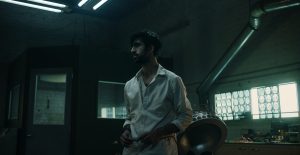 Research neuroscientist Ethan (Sathya Sridharan) is on the verge of losing his mind – literally – when an experiment goes wrong in director Eric Schultz’s debut feature, “Minor Premise,” now available for online streaming. Photo courtesy of Utopia Distribution.[/caption]
Research neuroscientist Ethan (Sathya Sridharan) is on the verge of losing his mind – literally – when an experiment goes wrong in director Eric Schultz’s debut feature, “Minor Premise,” now available for online streaming. Photo courtesy of Utopia Distribution.[/caption]
When enough of these instances occur, Ethan realizes that something is amiss and that he must do something about it. To gather evidence of what might be transpiring, he installs a series of video surveillance cameras in the house to capture any activity going on that he might not be able to recall on his own. He also consults his friend Alli (Paton Ashbrook), a fellow researcher with whom he also has a past. But, even with the collection of video footage and Alli’s assistance, the strangeness continues, and it proves to be even more erratic and unpredictable than initially thought.
Over time, though, with the compilation of considerable recorded evidence and Alli’s firsthand observations of Ethan’s behavior, a pattern begins to emerge. It seems that Ethan had hooked himself up to the equipment from his experiment. The equipment, in turn, analyzed the various segments of the mind that contribute to memory formation, identifying each of the separate components. However, the problem with that is that the equipment also made a comparable separation inside Ethan’s mind.
From that evidence, the researchers discover that Ethan’s consciousness has fragmented into 10 segments that each take control of him for six minutes every hour, repeating with the start of each new 60-minute cycle. They also discover that the segments correspond to those identified by the equipment. Elements like anxiety, anger, libido, intellect and euphoria, among others, each take charge when their time comes up every hour. Ethan’s personality and behavior correspondingly reflect those traits. He can be thoughtful and considerate one minute and off the rails the next. It makes for a scary and unpredictable time for both Ethan and Alli as they seek to determine what the segments yield and in what sequence.
This development also explains Ethan’s ongoing memory loss. Because it’s now apparent that our memories arise from input from each of these segments, they can only be recalled when they’re compiled as collective amalgamations. This accounts for why the recorded memory images collected in the initial phase of the research turned out so convoluted: Because every segment was supplying input to the visual read-outs, they were all vying to have their input represented and depicted in the finished product. Now, with each segment of Ethan’s mind functioning independently of one another, no cohesive fusions occur, leaving him with no compiled memory to recall. Thus, if he wants to return to normal, he must reintegrate the components to restore their joint functioning – the way they were meant to work in the first place.
As Ethan and Alli work to develop the reintegration process, they find themselves up against several challenges. For instance, they must work quickly, given the short time frames involved with each segment being in control. And, considering the differences in the nature of each component, they must take greatest advantage of those that will be most helpful – such as intellect and creativity – during the brief periods in which they’re in charge; anxiety and anger, by contrast, are not likely to be nearly as accommodating under these conditions. What’s more, despite the evidence Ethan and Alli have amassed, there’s still one segment – No. 8 – whose nature they have not been able to identify. That means there’s going to be a six-minute period that occurs every hour in which they have no idea what they’re up against.
Thus sets the stage for what the researchers must do if they hope to successfully reintegrate the segments of Ethan’s mind and restore his memory function to normal operation. But, with the clock and a hefty dose of unpredictability working against them, that’s easier said than done.
The concept of “the many within the one” can be found throughout literature, philosophy and mythology. From the archetypal theories of Carl Jung to an episode of Star Trek: The Next Generation, various references support the notion that multiple aspects of ourselves can be found coexisting within each of us and that they all contribute to making us who and what we are. In some ways, this could even be seen as an internalized example of the “It takes a village” principle that began as an African proverb and later went on to provide the title and content of Hillary Clinton’s best-seller about raising children. Every element plays a part, and they are all intrinsically connected.
So it is, too, in “Minor Premise” when it comes to the issue of memory formation, that input from each of the various aspects that comprise our consciousness work together to produce their finished product. In many ways, this is very much in line with the concept of our multidimensional selves, a key concept in the philosophy of conscious creation. This metaphysical doctrine maintains that we draw upon the power of our thoughts, beliefs and intents in manifesting the reality we experience. And, with the collective participation of each of these individual selves, we coalesce their contributions into the cohesive whole that we find surrounding us.
However, this process only works when they various contributing aspects cooperate. If they go rogue and each try to produce results on their own, a schism can emerge, not unlike what Ethan experiences when the various segments of his consciousness seek to function independently. It’s as if one were to try out a recipe using only one of its ingredients. Imagine trying to bake a cake only using flour or to create pasta sauce with only tomatoes. In both cases, the end result just wouldn’t be the same without the inclusion of everything else that makes them what they’re supposed to be.
This collective effort is crucial in memory formation since memories play an important role in shaping our beliefs, as evidenced, for example, in the recently released Greek offering, “Apples” (“Mila”). When the process is disrupted, it affects not only what we recall, but also how we function in our everyday experience. So it is for Ethan as he struggles to cope with getting a handle on an existence whose history and attributes he struggles to remember, making his ability to maneuver through it increasingly difficult every six minutes.
Despite the obstacles he encounters in his research, the premise from which Ethan initially operates – that of examining our memories to help us heal and thus potentially reshape our lives – is theoretically sound and indeed possible from a conscious creation perspective. If we were to see firsthand exactly what our memories are and how they arise, we would have an opportunity to rewrite our beliefs and consequently set ourselves on a new course for our lives. Imagine using this process, for example, in rehabilitating individuals with issues that could be keeping them stuck, such as prison inmates or those with mental health issues. Even those with less severe but nevertheless inhibiting blockages could be enabled to get past them and move forward in their lives. That could be quite a remarkable breakthrough, no matter what the degree of severity involved.
However, as the film shows, this is a process that needs to be carried out where all of the contributing factors in memory formation are allowed to work together. They all have something to say and need to be able to say it. For example, when it comes to memory, can we really separate our recounting of the facts of an event without taking into account how we feel about those facts? Both the facts and the feelings collaborate in producing the beliefs that drive the memory that results. If we were to try to analyze the memory by drawing upon only one aspect of what went into its creation, we’d get a skewed view, not unlike what would come from those aforementioned single-ingredient recipes. Such a practice would thus prevent us from seeing the bigger picture that results from their joint participation, keeping us from making meaningful progress at resolving any issues that might be involved.
This is something that Ethan comes to realize as he and Alli work through the details of trying to establish a successful reintegration process. However, when certain segments of his consciousness are allowed to come to the surface in full force without the buffering effects of the other elements, the unrestrained power of those aspects is also given free rein, and that subsequently becomes apparent in his outward behavior. This has the potential for the unleashing of a truly dangerous situation, one that could carry significant consequences, such as preventing the reintegration process from taking place. Or worse.
Filmmaker Eric Schultz’s debut feature is indeed impressive. It echoes the works of director Christopher Nolan, as well as themes first raised in the sci-fi classic “Brainstorm” (1983). This hybrid sci-fi/smart horror thriller gets better with each passing frame, despite an opening sequence that is a little too technical and needlessly cryptic. While the disjointed nature of the film’s outset is no doubt an attempt to depict what’s going on in the protagonist’s mind, it carries the idea a little too far in the first 30 minutes, making the story challenging to follow at times. Nevertheless, despite this shortcoming, the film makes up for this once the story hits its stride, taking viewers on quite a ride all the way to its conclusion – one that tells an intelligent story and kicks some ass in the process, with plenty of twists and turns along the way. The picture is available for online streaming from multiple sources.
The reality we experience is in many ways like an elegantly woven tapestry – beautiful to look at but easily unraveled if we begin pulling on even one of the threads. Before long, what we’re left with is a pile of strands that aren’t easily reassembled into what we had. So it is also with our minds and consciousness, the means we employ in bringing our existence into being. If we unduly tamper with the composition of these foundational elements, we may quickly find ourselves having to pick up the pieces to see if we can put them back together again, a prospect with no guarantee for success. We should thus be careful how we tread. The premise behind what we’re attempting to achieve may be significant and well-intentioned, but, if we err in our effort to realize it, the resulting adverse consequences could be anything but minor.
Copyright © 2020, by Brent Marchant. All rights reserved.
Saturday, December 12, 2020
‘Mank’ wrestles with matters of integrity, truth
“Mank” (2020). Cast: Gary Oldman, Amanda Seyfried, Arliss Howard, Charles Dance, Lily Collins, Tom Pelphrey, Ferdinand Kingsley, Tuppence Middleton, Joseph Cross, Monika Gossmann, Sam Troughton, Tom Burke, Jamie McShane, Bill Nye, Jeff Harms, Paul Fox. Director: David Fincher. Screenplay: Jack Fincher. Web site. Trailer.
Speaking our truth is indeed a noble pursuit. Our faithfulness to our own authenticity is a clear indicator of our integrity, a quality widely respected by others and of which we should be personally proud. But not everyone appreciates such candor, especially if it ruffles the feathers of those who stand to lose much from such revelations. So it was for the writer of a big screen classic as depicted in the new Hollywood back story saga, “Mank.”
In 1941, writer-actor-director Orson Welles (Tom Burke) released the cinematic classic “Citizen Kane,” widely regarded as one of the greatest (if not the greatest) films ever made. The prodigious wunderkind, who began work on the picture in 1939 at the age of 24, had been given carte blanche by the film’s studio, RKO Pictures, to make the movie in virtually any way he saw fit, including the hiring of collaborators and controlling the final cut. It was an unprecedented contract and one that angered many moguls in the traditional Hollywood studio system.
Welles, who had established himself as an icon in the New York theater community and on radio, prided himself on the quality of his work, and he now sought to do the same in the world of film. That began with the script, and, to that end, he wanted the best screenwriter he could find, an assignment for which he tapped the services of Herman J. “Mank” Mankiewicz (Gary Oldman).
Mank had developed quite a reputation for himself in writing circles. Over the years he had worked as a correspondent for The Chicago Tribune, a drama critic for The New York Times and a contributor for The New Yorker. He later established himself as a prolific screenwriter in Hollywood, contributing to many scripts and frequently reworking the screenplays of other writers, often uncredited, as was the case, for example, with “The Wizard of Oz” (1939). He became known for his signature style, particularly his incisive wit and biting satire, making his work (especially his humor) some of the most distinguishable in the business, even if not officially acknowledged as such.
[caption id="attachment_11945" align="aligncenter" width="350"] Screenwriter Herman J. “Mank” Mankiewicz (Gary Oldman, left) prepares to pen the crowning achievement of his career, the screenplay for “Citizen Kane,” as chronicled in director David Fincher’s latest offering, “Mank.” Photo courtesy of Netflix.[/caption]
Screenwriter Herman J. “Mank” Mankiewicz (Gary Oldman, left) prepares to pen the crowning achievement of his career, the screenplay for “Citizen Kane,” as chronicled in director David Fincher’s latest offering, “Mank.” Photo courtesy of Netflix.[/caption]
When Welles decided that Mank was who he wanted, he approached him with the offer. At the time, Mankiewicz was recovering from injuries suffered in a car accident. By virtue of being laid up, he was seen as being free to devote all his time to his writing, a condition it was hoped would keep him from being distracted by his chronic vices of compulsive gambling and incessant drinking. (Welles even sought to ensure that for the remainder of Mank’s recovery, albeit with only modest success, by setting him up to do his writing in a home on a “dry” ranch in Victorville, CA.) And so, with the assistance of a transcriber, Rita Alexander (Lily Collins), a housekeeper and physical therapist, Fräulein Frida (Monika Gossmann), and Welles’s liaison, actor-director-producer John Houseman (Sam Troughton), Mank began his work.
“Citizen Kane,” a thinly veiled fictional account of the life of newspaper magnate William Randolph Hearst (Charles Dance), was a controversial project from the outset. Given the clout wielded by the powerful businessman and former politician, Hearst was seen by many as an untouchable target whom no one would dare take on. But Welles, and especially Mankiewicz, weren’t afraid of telling Hearst’s story in the guise of media mogul and onetime New York gubernatorial candidate Charles Foster Kane, even in spite of the legal challenges that were expected to come out of it. And those legal challenges were anticipated largely because the finished project was foreseen as likely being highly unflattering to one of the most powerful men in America.
Why unflattering? Because Hearst had a number of skeletons in his closet (as well as some that were hiding in plain sight but that went largely uncensured). For Mank’s part, he believed that those egregious transgressions desperately needed to be exposed, especially since many went against his sensibilities and affected those whom he cared about personally. Thus began his mission to pen the screenplay that would fulfill those objectives.
[caption id="attachment_11946" align="aligncenter" width="350"]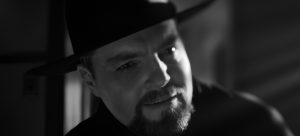 Writer-actor-director Orson Welles (Tom Burke) prepares to film his debut feature, “Citizen Kane,” what would become a cinematic classic, as chronicled in the back story saga, “Mank.” Photo courtesy of Netflix.[/caption]
Writer-actor-director Orson Welles (Tom Burke) prepares to film his debut feature, “Citizen Kane,” what would become a cinematic classic, as chronicled in the back story saga, “Mank.” Photo courtesy of Netflix.[/caption]
The story of how Mank’s script came into being is told through a series of flashbacks dating back to the early ʼ30s. Having been in Hollywood for a few years, he became a big fish in the pond rather quickly as one of the highest paid writers in town. He had also amassed enough clout to become a major recruiter of “new” talent, enabling him to bring to Hollywood a number of his former colleagues, such as writer Ben Hecht (Jeff Harms). Hecht, in turn, tapped the talents of scribe Charles Lederer (Joseph Cross), who soon became friends with Mank. Little did Mank realize at the time that his association with Lederer would open doors for him that he never expected.
One fateful weekend, Lederer invited Mankiewicz to join him for a visit to see his aunt, a prospect Mank initially viewed with little enthusiasm. However, that changed when Mank found himself at San Simeon, Hearst’s opulent California estate, home of the mogul and his longtime mistress, Marion Davies (Amanda Seyfried), Lederer’s aunt. That weekend visit introduced Mank to Hearst’s world, setting in motion the basis for the script of “Citizen Kane.”
Through subsequent flashbacks, viewers come to learn how and why Mank grew to despise Hearst, despite the fondness he developed for Davies, with whom he became good friends (somewhat to the consternation of Mank’s loyal but long-suffering wife, Sara (Tuppence Middleton)). Mank saw Hearst as a manipulating, self-serving schemer who unhesitatingly shifted his views whenever it became convenient or in his own best interests, with little consideration for who it would affect and how.
[caption id="attachment_11947" align="aligncenter" width="350"]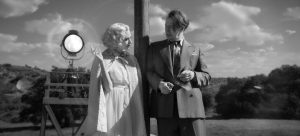 Actress Marion Davies (Amanda Seyfried, left), mistress of newspaper mogul William Randolph Hearst, strikes up a friendship with screenwriter Herman J. “Mank” Mankiewicz (Gary Oldman, right) who’s about to pen a script in which she provides the inspiration for a principal character, as seen in the “Citizen Kane” back story saga, “Mank.” Photo courtesy of Netflix.[/caption]
Actress Marion Davies (Amanda Seyfried, left), mistress of newspaper mogul William Randolph Hearst, strikes up a friendship with screenwriter Herman J. “Mank” Mankiewicz (Gary Oldman, right) who’s about to pen a script in which she provides the inspiration for a principal character, as seen in the “Citizen Kane” back story saga, “Mank.” Photo courtesy of Netflix.[/caption]
For instance, the onetime-populist Hearst grew progressively more conservative with age, doing everything he could to thwart the efforts of progressives whom he once claimed to support. This became apparent during the 1934 California governor’s race in which Hearst undercut the campaign of Socialist-turned-Democratic Party candidate Upton Sinclair (Ben Nye) by sanctioning propaganda films claiming that the challenger to Republican incumbent Frank Merriam was seeking to turn the state into a haven for Communists. This effort was a collaboration cooked up by Hearst in conjunction with MGM Studio Chief Louis B. Mayer (Arliss Howard) and producer Irving G. Thalberg (Ferdinand Kingsley). The offer to make these films was extended to would-be filmmakers like cameraman Shelly Metcalf (Jamie McShane) in exchange for future directorial opportunities, breaks these aspiring auteurs might not otherwise get. The films presented a skewed view of Sinclair’s campaign and ultimately contributed to costing him the race.
This practice upset Mank for various reasons. It went against his personal politics. It left him disillusioned about MGM, his employer at the time, especially the company’s aggressive solicitation of his support for its anti-Sinclair effort. It saddened him about the devastating impact it left on his friends who played along with Mayer and Thalberg, leaving them feel as though they had made deals with the devil by abandoning their principles for personal and career gains. And, when Mank learned that all of this occurred with Hearst’s blessing, it made him realize just how truly dangerous this maniacally powerful individual was. It also reinforced his view of Hearst as a political turncoat, calling into question the populist support he once allegedly embraced and thereby exposing his hypocrisy.
When Mank finished his script, he was proud of his accomplishment, believing it to be the best work he had ever done. Welles concurred, though he noted that there were some portions that could use some revision. But not everyone agreed. Mank gave copies of the script to others to read, such as Lederer, Davies and his younger brother Joseph (Tom Pelphrey), also a writer-producer at MGM. And, as much as they admired the writing, they saw the screenplay as an act of professional suicide, one that would probably get him blackballed in Hollywood and expose him to all manner of legal trouble.
Mank disagreed. Having always seen himself as freewheeling, opinionated, outspoken, and, most of all, truthful, Mank didn’t care about such threats. What’s more, he was so gratified with what he had produced that he even sought to renegotiate his deal with Welles: He wanted credit for his writing, a condition that went against his original agreement in which Welles was to get all of the recognition for the project as director, actor and writer. Needless to say, Mank’s request did not sit well with the boss. But, if the project were to move ahead, it was a concession that Welles would have to make, even if it would cost the collaborators their friendship and professional association.
[caption id="attachment_11948" align="aligncenter" width="350"] MGM Studio Chief Louis B. Mayer (Arliss Howard, left) and producer Irving G. Thalberg (Ferdinand Kingsley, right) quietly play a significant role in promoting the political agenda of powerful newspaper magnate William Randolph Hearst as seen in the new Hollywood drama, “Mank.” Photo courtesy of Netflix.[/caption]
MGM Studio Chief Louis B. Mayer (Arliss Howard, left) and producer Irving G. Thalberg (Ferdinand Kingsley, right) quietly play a significant role in promoting the political agenda of powerful newspaper magnate William Randolph Hearst as seen in the new Hollywood drama, “Mank.” Photo courtesy of Netflix.[/caption]
The finished product, unfortunately, was a box office flop, as Hearst did everything he could to sabotage its theatrical run. What’s more, the film has been a source of ample speculation over the years, both in terms of who Charles Foster Kane was actually based on and which of the script collaborators was responsible for what in the final cut. However, despite the issues involved in bringing “Citizen Kane” to life, the process its creators went through nevertheless led to the birth of a cinematic classic, one that was innovative in countless ways, set new filmmaking standards and opened the door to new opportunities to future directors. And, even though Welles and Mank had their differences in the end, they shared an Oscar for best original screenplay for their work, the only statue that the film captured out of its nine Academy Award nominations.
It should be noted that this film is based on a true story, so its narrative is not to be construed literally but as a collection of speculative re-creations. That’s important to bear in mind considering that there may not be universal agreement on how events actually played out between Mank and Welles. There’s also disagreement about whom the story of “Citizen Kane” is based. As I noted in an end note to my review of that classic film in my most recent book, Third Real: Conscious Creation Goes Back to the Movies, Charles Foster Kane was also said to be patterned after Hearst’s fellow editors and publishers Joseph Pulitzer, Herbert Bayard Swope, and Alfred Harmsworth, 1st Viscount Northcliffe, with separate accounts claiming the character was based on Chicago industrialists Samuel Insull and Harold McCormick. That aside, though, “Mank” appears to conform with what Mankiewicz asserted was the truth in his own mind, the basis for the discussion that follows.
It’s been said that honesty is the best policy, and I think most people would agree with that. Mank appeared to believe in it, and he made it is his mission when it came to telling the story of Hearst and his cinematic alter-ego. Considering what was alleged to have transpired in Hearst’s life, one could say Mank was justified for drawing it to the public’s attention. The success that came from this effort is apparent in the quality of his finished screenplay, as well as the accolades that it received once translated to film.
Mank’s success was an outgrowth of his belief in being authentic, of pursuing and sharing what he saw as a truth that the public needed and deserved to know. The power of that belief made possible what resulted, the end product of the conscious creation process, the philosophy that maintains the reality we experience stems from those notions that we hold most dear. Mank may have never heard of this practice, but, given what he accomplished, he nevertheless appeared to have a good handle on its principles.
[caption id="attachment_11949" align="aligncenter" width="350"] Loyal but long-suffering wife Sara Mankiewicz (Tuppence Middleton) has her hands full with the chronic gambling and drinking vices of her husband, screenwriter Herman J. “Mank” Mankiewicz, as seen in the new Hollywood drama, “Mank.” Photo courtesy of Netflix.[/caption]
Loyal but long-suffering wife Sara Mankiewicz (Tuppence Middleton) has her hands full with the chronic gambling and drinking vices of her husband, screenwriter Herman J. “Mank” Mankiewicz, as seen in the new Hollywood drama, “Mank.” Photo courtesy of Netflix.[/caption]
Mank’s achievements are attributable to a number of key beliefs. For instance, he saw himself as an open book, and he tended to be a straight shooter, even if what he had to say wasn’t what others wanted to hear. That kind of personal integrity and authenticity carry a lot of weight and are capable of yielding results that are hard to argue with. Likewise, Mank had a firm handle on his writing ability. He knew he was a master of the craft and was able to wield his pen like both a delicate paint brush and a sharpened sword, all the time making his work look effortless. It’s no wonder that the strength and power of those beliefs produced the outcomes that they did.
Of course, there were those at the time and in the ensuing years who doubted his contentions. They labeled his work a personal vendetta against Hearst after being exiled from his subject’s inner circle, and one could argue that such claims might indeed have some merit. They often cited his drinking and gambling as reasons for doubting his credibility. But, despite these issues and the criticism they generated, Mank never backed off from calling things as he saw them, both when it came to himself and others, a penchant for being honest that, again, is hard to argue with. Because of his integrity in this regard, especially when it came to himself, it’s difficult to take issue with it when it came to how he employed it in his characterization of others, no matter how rich, powerful and respected they may be.
Given Mank’s beliefs and the qualities they engendered in him, it’s clear that he was in touch with practicing his value fulfillment, the conscious creation concept associated with being our best, truest selves for fostering the betterment of ourselves and those around us. One could even call this living out our destiny. But, no matter how we semantically characterize this principle, and regardless of how eloquently or coarsely it may express itself, what’s most important is how authentically and effectively it manifests. If his subject’s transgressions had been allowed to go by unaddressed, one could argue that we may not be as circumspect or skeptical of those deserving of legitimate suspicion. Indeed, there’s something to be said for the whistleblowers of society, no matter how brash they might appear – or how unpopular they might become because of it.
David Fincher’s colorful back story examining how the “Kane” screenplay came together harkens back to the lavish productions of old Hollywood with all the trimmings. Its gorgeous black-and-white cinematography and its slate of stellar performances, including those of Oldman, Seyfried, Howard and Dance, remind us of an era gone by and shed light on one that most of us in the general public may have never known existed. Nevertheless, despite these strengths, one can’t help but wonder why many moviegoers would care about a picture like this. Unless one is a diehard classic movie buff, a Welles aficionado or a student of 1930s left-wing politics, “Mank” simply may not have much to offer the average viewer, especially with the film’s many inside (and unexplained) references to these subjects, its ample “Kane” trivia and the details of the lives of those who inspired its storyline. This is by no means a bad picture (though it is a little slow to get started), but it may prompt many to wonder about its reason for being – and leave them pining for Mankiewicz’s handiwork instead. This Netflix original, which is generating considerable awards season buzz, had a brief theatrical run and is now available for online streaming.
Getting at the truth of a matter can be challenging, especially when those seeking to conceal it make every effort to keep it under wraps. Thankfully, though, there are those who are committed to seeing it reach the light of day – and in full public view. Such champions may not always be saints, but their intents are generally sincere in their efforts to enlighten us all. And if that takes raising a little Cain, then so be it.
Copyright © 2020, by Brent Marchant. All rights reserved.
Friday, December 11, 2020
‘Divine Love’ questions the nature of authentic faith
“Divine Love” (“Divino Amor”) (2019 production, 2020 release). Cast: Dira Paes, Julio Machado, Antonio Pastich, Teca Pereira, Emílio de Melo, Clayton Mariano, Mariana Nunes, Suzy Lopes, Thardelly Lima, Thalita Carauta, Tuna Dwek, Thiago Justino, Edilson Silva, Nataly Rocha, Calum Rio (narrator). Director: Gabriel Mascaro. Screenplay: Gabriel Mascaro, Richard Daisy Ellis, Esdras Bezzerra, Lucas Paraizo and Marcelo Gomes. Web site. Trailer.
For many of us, faith is looked upon as central to our worldview and existence. Its form may vary somewhat from individual to individual, but its essence is generally the same. However, no matter how much we may proclaim we adhere to our faith, how authentic are we with ourselves when it comes to our practices matching our contentions in this regard? Do we cling to our faith with absolute fidelity, or do we try bending the rules when necessary to suit other agendas? And what happens if our faith is tested and we’re reluctant to acknowledge the manifestation of an aspect of it with which we disagree, despite supposed claims to the contrary? Those are among the questions raised in the new Brazilian religious satire, “Divine Love” (“Divino Amor”).
In a Brazil of the near future in which fundamentalist Christianity has insidiously ingratiated itself into what is still a supposedly secular state, elements of the church and its ideology have intrusively invaded virtually every aspect of everyday life. Evidence is everywhere, too, such as in the opening of ecclesiastical discos and drive-through pastoral advice centers. This development has thus come to affect the rights of everyone, including non-believing “infidels.”
This is apparent, for example, in a government registry office, where Joana (Dira Paes), a notary in charge of marriage and divorce records, manages to incorporate her devoutly pious views into seemingly every client consultation she conducts, especially with individuals and couples seeking to separate from their spouses or one another. Joana has taken it upon herself to act like an impromptu marriage counselor, couching the legal details of their impending separations in advice about what they can do to reconcile their differences and save their relationships. Her unsolicited gesture is met with mixed results, and, while Joana’s supervisor (Antonio Pastich) doesn’t particularly condone this practice, he also does little to squelch it. Because religious fundamentalism has become so ingrained in society – even in official functions – its practitioners are given considerable leeway by those in power to operate as they see fit, despite public claims that the country and its government remain free of such faith-based influences.
[caption id="attachment_11936" align="aligncenter" width="350"] Brazilian notary Joana (Dira Paes, left) augments her client consultations with unsolicited fundamentalist Christian teachings with mixed results in the biting new religious satire, “Divine Love” (“Divino Amor”), now available for online streaming. Photo courtesy of Outsider Pictures.[/caption]
Brazilian notary Joana (Dira Paes, left) augments her client consultations with unsolicited fundamentalist Christian teachings with mixed results in the biting new religious satire, “Divine Love” (“Divino Amor”), now available for online streaming. Photo courtesy of Outsider Pictures.[/caption]
Despite occasional objections, Joana nevertheless feels compelled to keep up her efforts, to enthusiastically share her devotion with others. She’s particularly thrilled when she finds those who are receptive to her brand of evangelizing, especially if such guidance helps set individuals and couples on the path to preserving their marriages. For those who express interest, Joana encourages them to join her and her husband, Danilo (Julio Machado), at gatherings of an organization known as Divine Love. The purpose of the group is for loving couples to get together to share their faith, particularly as it relates to their relationships, expressing how their devotion to Jesus has strengthened their marriages.
But there’s more to Divine Love than just reading scripture and sharing personal stories. Because many of the couples who attend the organization’s sessions are in marriages that are teetering on the brink of failure, one of the aims of the group is to look for ways to bring the partners back together, particularly when it comes to once again spicing up the romance between them. And that’s where Divine Love’s little secret comes into play – by encouraging struggling couples to engage in uninhibited sexual escapades, both with one another and other couples. The thinking (though some might say rationalization) behind this is that, by freeing ourselves from the erotic inhibitions that prevent our unrestrained divine love from flowing through us to our partners (even if liberated with the “assistance” of others), we can restore our sacred devotion to our spouses and our commitment to our relationships. Lovemaking of any kind with both partners and others is fair game with one exception – men are only allowed to climax with their spouses. After all, if that restriction weren’t in place, Divine Love contends, it would violate God’s sacred will.
Joana and Danilo appear to enjoy their involvement with Divine Love (some might legitimately say, “with a ‘morally sanctioned’ arrangement like that, who wouldn’t?”). They get the satisfaction of helping others while maintaining the strength of their own relationship. In fact, they generally seem fairly happy with one another except in one area: They dearly want to have children, but, no matter how much they try, they continually fail. Danilo tries a variety of techniques and technologies to increase his sexual viability. And Joana prays constantly, asking God for assistance when she’s not visiting the drive-through pastoral advice center to consult the resident cleric (Emílio de Melo). But nothing seems to work – that is, until one day.
[caption id="attachment_11937" align="aligncenter" width="350"] With her husband Danilo (Julio Machado, right), fundamentalist Christian Joana (Dira Paes, left) revels in joys of a faith-based marriage support group with a twist in director Gabriel Mascaro’s latest offering, “Divine Love” (“Divino Amor”). Photo courtesy of Outsider Pictures.[/caption]
With her husband Danilo (Julio Machado, right), fundamentalist Christian Joana (Dira Paes, left) revels in joys of a faith-based marriage support group with a twist in director Gabriel Mascaro’s latest offering, “Divine Love” (“Divino Amor”). Photo courtesy of Outsider Pictures.[/caption]
While passing through a special scanner that provides read-outs on various aspects of one’s health and personal well-being, Joana learns she’s pregnant. She’s overjoyed, giving thanks that God has finally answered her prayers. However, when she looks into the paternity of the child, she discovers that it’s not attributable to Danilo – or to any of the other men from Divine Love who could have inadvertently inseminated her. After ruling out all of the possible fathers, she’s left with only one conclusion – she’s carrying a child who possesses a genuinely divine heritage. Indeed, God answered her prayers alright, but certainly not as expected.
Joana sees this blessed event as a miracle. But will everyone see it the same way? Will others share her joy in the revelation that she’s carrying the child of God, the second coming of Jesus that Christians have awaited for so long? Or will they see her as a blasphemer, one who dares to claim that she’s an integral part of a sacred prophecy not to be treated so sacrilegiously? And what of Danilo and her Divine Love family – how will they react, with support or scorn? The question of genuine faith is thus put to the test. One can’t help but wonder, however, how will it fare?
Many of us would contend that faith, like patience, is a virtue, something we strive to attain, though with varying degrees of success. In this regard, much depends on our degree of truthfulness with ourselves: How honest are we being when it comes to what we’re seeking and the elements that constitute it? Are we truly seeking to achieve what we claim to be pursuing? Or are we placing qualifiers on our ultimate goal, ancillary (or even seemingly unrelated) elements that could compromise or distort the authenticity of what we say we ultimately want?
[caption id="attachment_11938" align="aligncenter" width="350"] Group retreats are among the distinctive rituals practiced by an uninhibited fundamentalist Christian marriage support group in “Divine Love” (“Divino Amor”). Photo courtesy of Outsider Pictures.[/caption]
Group retreats are among the distinctive rituals practiced by an uninhibited fundamentalist Christian marriage support group in “Divine Love” (“Divino Amor”). Photo courtesy of Outsider Pictures.[/caption]
That’s where our beliefs come into play, for they shape the nature of our objective and the means we employ in reaching it. And those intents, in turn, will be reflected in the reality we experience, the core principle underlying the conscious creation process, the philosophy that maintains we draw upon these metaphysical resources in manifesting our surrounding existence. But how exactly does this happen?
Our beliefs, in essence, are mirrored in what unfolds, and the outcome will “faithfully” (no pun intended) depict that input. What’s more, the stronger our convictions – that is, the more “faith” we place in them – the more authentic the results we’ll achieve. But it’s also important to remember that faith itself is a creation, and how well we manifest it will depend on what we put into it.
For many of us, this most obviously comes into play where religious and spiritual beliefs are concerned. The faith we have in these areas will thus be apparent in the materializations associated with these aspects of our lives. If we subscribe to a particular doctrine, the degree to which our reality reflects it will depend on the degree we adhere to its particular principles and concepts. If we are firm believers who sincerely place our heartfelt faith in its precepts, the more our existence will embody those attributes.
But what happens if we try to “fudge” our convictions? Suppose we’re only willing to embrace a doctrine’s principles up to a certain point. In a case like this, it would follow that our faith would be reflected only up to that point in our resulting reality. For instance, if the fundamentalists in this story claim to firmly believe in a second coming of Jesus but then question the possibility when someone like Joana contends that it’s about to happen, can those doubters legitimately have an authentic faith in their doctrines if they fail to follow through on their convictions when the opportunity presents itself?
[caption id="attachment_11939" align="aligncenter" width="350"] When fundamentalist Christian Joana (Dira Paes, left) needs a shot of inspiration, she visits one of Brazil’s drive-through pastoral advice centers to consult the resident cleric (Emílio de Melo, right) in the biting new satire, “Divine Love” (“Divino Amor”). Photo courtesy of Outsider Pictures.[/caption]
When fundamentalist Christian Joana (Dira Paes, left) needs a shot of inspiration, she visits one of Brazil’s drive-through pastoral advice centers to consult the resident cleric (Emílio de Melo, right) in the biting new satire, “Divine Love” (“Divino Amor”). Photo courtesy of Outsider Pictures.[/caption]
When circumstances like this arise, a door can open to an array of unexpected consequences. Disillusionment, despondency and disappointment, for example, are all possible. Likewise, the entire belief structure associated with that doctrine – that is, our faith in it – could potentially fall apart like a house of cards. Then where would we be?
If someone were to doubt Joana’s claim of being a modern-day Virgin Mary, for example, she might be made to feel like a pariah, even though deep down inside she may genuinely believe that she’s fulfilling a divine prophecy, one very much in line with the tenets of religious doctrine and her own faith. At the same time, those who doubt her contention might be quick to label her a blasphemer, an objection that might seem to call their faith into question, prompting onlookers to ask, “Do they really believe what they claim to believe?” In both instances, the faith and beliefs that had been in place could collapse, leaving their adherents without anchors in their religious and spiritual lives. Then what?
What’s perhaps even more troubling, however, are scenarios in which we try to place qualifiers on what we claim to believe and what’s integral to the nature of our faith. This raises the specter of hypocrisy emerging. For example, are Divine Love’s principles about rationalized spouse swapping really in line with Christian teachings about marriage and fidelity? Or are they being justified into existence to support its followers’ desire to get freaky outside the bounds of their primary relationships, all supposedly in the name of their religious doctrines? Granted, there’s arguably nothing inherently wrong with wanting to have a robust sex life with multiple partners, but at least be honest about it – that it’s an end in itself that’s being sought, not one that’s being pursued in the name of Jesus, especially since it’s not generally seen as being part and parcel of Christian teachings.
[caption id="attachment_11940" align="aligncenter" width="350"] An ongoing inability to have children is a source of strain in the otherwise-happy marriage of Joana (Dira Paes, left) and her husband, Danilo (Julio Machado, right), in director Gabriel Mascaro’s “Divine Love” (“Divino Amor”). Photo courtesy of Outsider Pictures.[/caption]
An ongoing inability to have children is a source of strain in the otherwise-happy marriage of Joana (Dira Paes, left) and her husband, Danilo (Julio Machado, right), in director Gabriel Mascaro’s “Divine Love” (“Divino Amor”). Photo courtesy of Outsider Pictures.[/caption]
This aspect of the story is particularly telling in light of the ubiquitous sex scandals that have emerged in Brazil and elsewhere in recent decades involving religious leaders and other “authority” figures. One can’t help but ridicule the hypocrisy involved in these situations. If those who claimed to speak for Jesus and the divine would only be honest with the public (and themselves) about the nature and extent of their “animal urges,” it’s likely that outsiders (and perhaps even some followers) would cut them a lot more slack about their personal proclivities. Their flocks could still have faith in them for their candor rather than ire for their insincerity. Being spiritual and sexual aren’t mutually exclusive, so why the pretense about their needing to be – or the trumped-up justifications for trying to make them seem religiously compatible?
There’s also a real danger when such mindsets seep out of their religious contexts and into other areas of life, as this film so clearly illustrates. That’s apparent, for example, in Joana’s workplace evangelizing. When religion and government become intertwined, it represents a potentially volatile mix, such as when Joana tries to “counsel” an uninterested client (Thalita Carauta) on a secular matter from a spiritual perspective. As Joana attempts to force her views on someone who’s indifferent to her proselytizing, the situation heats up, opening it up to unpleasant side effects for all concerned. But, more than that, it sets a hazardous precedent for society at large, threatening the secular sovereignty of a nation’s entire citizenry.
From a conscious creation perspective, it’s important to remember that the manifestation process is, in essence, a partnership between us and our divine collaborator (no matter what name we may call it). Our partner in this process recognizes the nature of our faith and beliefs, regardless of what they may be, and will bring to us exactly what we ask for, even if we don’t acknowledge, understand or appreciate the result for what it is or what prompted its materialization in the first place. So, in light of that, doesn’t it pay to be honest with ourselves and our collaborator to begin with? Doing so should strengthen our faith in one another and in the process we jointly conduct. It would also bring us closer to our authentic intentions and result in outcomes that more closely resemble them. That’s something we can all have faith in.
“Divine Love” is, without a doubt, one of this year’s most unusual releases, pushing the creativity envelope in truly inventive ways but always leaving viewers with much to ponder in the wake of its inherent improbable strangeness. However, as life has clearly shown us of late, unlikely peculiarity such as this has a possibility of coming into being, and, to that end, the picture serves up a powerful cautionary tale. Director Gabriel Mascaro’s wickedly biting satire exposes some of the hidden dangers that can quietly lurk in our society, no matter how humorous, comical or seemingly well-intentioned they may appear. It also calls us on our proclamations of faith and just how genuine they really are, something that could end up being a striking eye-opener for some of us. The film is currently available for online streaming.
As is the case with many of Mascaro’s films, this offering includes a number of protracted and explicit sex sequences, so sensitive viewers should be forewarned. While some might see this as a gratuitous exercise in pushing the boundaries of acceptable on-screen eroticism, Mascaro is one of a number of emerging filmmakers who obviously believe that sexuality needn’t be soft-peddled in its depiction, that realistic imagery doesn’t automatically make such graphic footage pornography. What’s more, its inclusion here is all part of exposing the phony piety that often goes into the rituals, practices and beliefs of all too many hypocritical faith-based movements, organizations whose missions essentially ring hollow and deserve to be revealed as such.
Faith can serve us well, as long as we serve it well, too. That’s important to remember when we’re up against life’s challenges, especially in critical areas like love and our connection to the divine. When we do so, we have an opportunity to experience “divine love” in its most heartfelt and authentic form. And, if we’re really truthful with ourselves, would we want to experience it any other way?
Copyright © 2020, by Brent Marchant. All rights reserved.
Thursday, December 10, 2020
Rest Well, My Friend
Many of you may not know the name Mary Dillman. But those of you who do are no doubt familiar with her many lasting accomplishments – not just those of her own, but also those of others she helped inspire. I can speak to that, since I’m one of them. And now that she’s transitioned to another state of existence, the strength and magnitude of her legacy are sure to take on added importance, not just for those whom she touched, but also to the newcomers who will undoubtedly by drawn to her work and that of her kindreds.
For many years, Mary was a tireless and passionate advocate of the conscious creation process, the philosophy that maintains we manifest the reality we experience through the power of our thoughts, beliefs and intents. Inspired by the writings of author and visionary Jane Roberts and her noncorporeal channeled entity Seth, conscious creation has enlightened and empowered many of us to become our best, truest selves for our personal betterment and that of those around us. And, for her part, Mary made it possible for many of us to come to know this body of work through her ongoing research into the material, particularly through studies of Jane’s published works, networking with those who knew the author and investigations into the little-known gems tucked away in the Roberts archives at the Yale University library.
In a similar vein, Mary was an accomplished facilitator, helping others launch conscious creation-related endeavors of their own. She was proficient at forging connections and collaborations between conscious creation practitioners to help them initiate projects aimed at spreading the word about this tremendously impactful philosophy. In fact, if it weren’t for Mary, there’s a good chance you wouldn’t be reading this blog right now – nor any of the other related books and web posts that I’ve penned over the years – since she facilitated the connection that led to the publication of my first title in 2007 (and everything else that has flowed from it since then). And that, in turn, helped foster the many new rewarding professional connections and friendships that I’ve made in that time. If that’s not proof of what this tremendously powerful doctrine can do, I don’t know what is.
I, like many others, owe much to Mary for helping us to realize our dreams. Thank you, my friend. Rest well, and relish all those grand new adventures in the joys of creation that you’re no doubt experiencing now.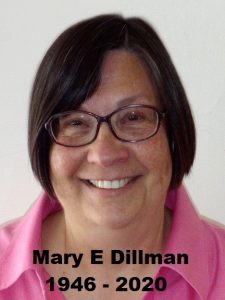
Copyright © 2020, by Brent Marchant. All rights reserved.
Monday, December 7, 2020
Check out The Cinema Scribe

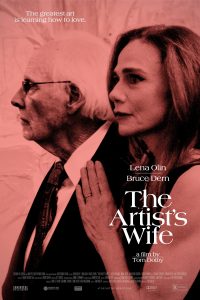
Sunday, December 6, 2020
This Week in Movies with Meaning

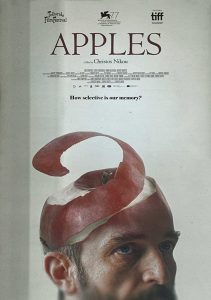


Saturday, December 5, 2020
‘The Artist’s Wife’ reflects on striking a balance
“The Artist’s Wife” (2019 production, 2020 release). Cast: Lena Olin, Bruce Dern, Juliet Rylance, Avan Jogia, Stefanie Powers, Tonya Pinkins, Catherine Curtin, Caryn West, Ravi Cabot-Conyers. Director: Tom Dolby. Screenplay: Tom Dolby, Nicole Brending and Abdi Nazemian. Web site. Trailer.
Giving our all to a beloved partner is certainly an admirable ambition, one that many of us strive for in hopes of it creating a state of mutual love and support. It’s widely believed such a connection can benefit each spouse, yielding both a flourishing relationship and a foundation for significant personal growth and development. But at what point does such devotion to another become unhealthy, leading to a lopsided bond? That’s a question explored in the new romantic drama, “The Artist’s Wife.”
For years, onetime-aspiring artist Claire Smythson (Lena Olin) has committed herself to supporting and promoting the painting career of her husband, Richard (Bruce Dern). It’s an effort that has paid off in many ways, too, as it has helped her remarkably talented spouse become an affluent and renowned icon in the abstract art world. And publicly he generously credits Claire for much of his success. From all appearances, it would seem that this is an arrangement that has worked well for both of them, as it has brought Richard acclaim while providing Claire with a comfortable life. However, as we all know, looks can be deceiving.
For starters, to be able to help Richard build his career, Claire gave up her own pursuit of becoming a painter, a gesture she quietly seems to regret, despite efforts to downplay her feelings. From what we see of her work, though, that could be viewed as a lamentable decision; she appears to possess a tremendous talent of her own, one that’s gone untapped and unrecognized in the shadow of her husband’s accomplishments. And, as she gets on in years, she’s beginning to look back on that move with some misgivings.
[caption id="attachment_11919" align="aligncenter" width="350"] Abstract art icon Richard Smythson (Bruce Dern, left) gives all the credit for his success to his wife Claire (Lena Olin, right), a onetime-aspiring painter who gave up her career to promote and support her husband in director Tom Dolby’s “The Artist’s Wife.” Photo courtesy of Strand Releasing.[/caption]
Abstract art icon Richard Smythson (Bruce Dern, left) gives all the credit for his success to his wife Claire (Lena Olin, right), a onetime-aspiring painter who gave up her career to promote and support her husband in director Tom Dolby’s “The Artist’s Wife.” Photo courtesy of Strand Releasing.[/caption]
Those misgivings are driven in part by her aging husband’s failing health. Richard appears to be in the beginning stages of Alzheimer’s disease, and the condition is starting to exacerbate some of his less-than-flattering qualities. His temperamental, capricious and egotistical nature can be difficult enough to deal with in itself, but, now that he’s been afflicted by an illness that carries its own degree of unpredictability, he’s become quite a handful to deal with. These circumstances call for even more of Claire’s time and attention, impinging not only on her ability to follow her own pursuits, but also to attend to the routine, mundane activities of everyday life. To call her situation exhausting would indeed be an understatement.
But Claire’s challenges don’t end there. Given Richard’s declining health, she tries reaching out to his daughter from his first marriage, Angela (Juliet Rylance), from whom he has been estranged for years. As a single mother raising a young son, Gogo (Ravi Cabot-Conyers), with the help of a live-in caretaker, Danny (Avan Jogia), Angela opposes contact of any kind with her father, despite his failing condition and any of Claire’s overtures to smooth relations between them while time remains.
And then there’s Richard, who brings additional challenges to the table. As his condition worsens, he’s unable to carry through on his obligations as he once was able to. His biggest challenge is creating the works for a new gallery show, one widely considered to be his last. However, with the deadline looming, his inspiration appears to have abandoned him, and he’s running out of time to come up with the pieces promised to an increasingly impatient gallery owner (Tonya Pinkins). On top of this, Richard’s progressively unpredictable behavior in the university painting class he teaches – most notably profanity-laden diatribes leveled against his students’ works – has placed his position in jeopardy. His frequent outbursts and tantrums try the patience of everyone around him, but especially Claire as she attempts to offer comfort and reassurance in the face of his growing anguish and frustration.
[caption id="attachment_11920" align="aligncenter" width="350"] With the years passing her by, onetime-aspiring artist Claire Smythson (Lena Olin) gets the itch to return to the painting career she gave up to support the work of her husband in “The Artist’s Wife.” Photo courtesy of Strand Releasing.[/caption]
With the years passing her by, onetime-aspiring artist Claire Smythson (Lena Olin) gets the itch to return to the painting career she gave up to support the work of her husband in “The Artist’s Wife.” Photo courtesy of Strand Releasing.[/caption]
Needless to say, this all creates a rather full plate for the ever-devoted wife. But how much longer can she hold up under these conditions, especially with pressure mounting from both Richard and everyone else? Circumstances make her wonder whether she’ll be able to keep up with everything, let alone make a meaningful difference. She increasingly reflects on whether everything she has done for her husband has been worth it, both in terms of personal, vocational and even romantic satisfaction. But, despite these conditions, she’s not without support, such as the sage advice given to her by a flamboyant old friend from the arts community, Ada Risi (Stefanie Powers). The question is, of course, will she take it to heart?
As the situation intensifies, Claire is faced with some hard choices. Can she help Richard in the ways he needs it, or is it a lost cause? Can she help mend the fences between a long-alienated father and daughter? And is she willing to finally address the fulfillment of her own long-overdue overlooked needs? Perhaps it’s possible, but doing so may require some bold creative steps of her own, some that could finally allow her to become an “artist” in her own right – and in ways that are unexpected and unconventional at that.
Having a loving partner who is willing to freely do whatever it takes to support our endeavors is indeed a blessing. But what happens when the requirements of that backing become so burdensome that they compromise our significant other’s own existence, depriving our partner’s ability to pursue his or her own interests – or perhaps to even function on a daily basis? What’s more, why would someone willingly subject one’s partner (or, even more tellingly, himself or herself) to such onerous conditions? Is love really enough to sustain such a potentially unbalanced relationship? Those are some of the questions that Claire and Richard now find themselves up against.
[caption id="attachment_11921" align="aligncenter" width="350"] Aging abstract artist Richard Smythson (Bruce Dern) laments the abandonment of his inspiration as he frustratingly attempts to prepare for a new gallery show in the new romantic drama, “The Artist’s Wife,” now available for first-run online streaming. Photo courtesy of Strand Releasing.[/caption]
Aging abstract artist Richard Smythson (Bruce Dern) laments the abandonment of his inspiration as he frustratingly attempts to prepare for a new gallery show in the new romantic drama, “The Artist’s Wife,” now available for first-run online streaming. Photo courtesy of Strand Releasing.[/caption]
In essence, circumstances come down to what the partners believe about their relationship, their responsibilities to one another and themselves. And those beliefs, in turn, shape the reality they experience, a product of the conscious creation process, the philosophy that maintains we draw upon those resources in manifesting our existence. That’s very much the case here, and the dynamics involved are indeed significant on multiple levels.
Claire, for example, is torn between what she sees as her duties to Richard and the pursuit of her own ventures. In many ways, these endeavors could be viewed as being at odds with one another, a stalemate that’s growing increasingly difficult to resolve and the source of the building stress and frustration in her daily routine. She obviously loves her husband and wants to do right by him, both as a committed spouse and as a supporter of his calling. But, now that Richard has developed Alzheimer’s, the requirements for caring for his well-being alone have expanded significantly, let alone attending to the needs of helping him keep his career on track. And her own pursuits, to say the least, have been relegated to the back burner, despite her mounting urge to revive them.
To reconcile this situation, Claire must ask herself what she wants and determine what beliefs she needs to put into place to make that happen. One step that’s especially critical in this is being willing to be honest with herself, to focus on assessing the needs of her authentic self. On the one hand, she believes in being supportive of Richard, but is it too much for her to handle? At the same time, she’s obviously questioning the wisdom of continually putting herself second, subverting her genuine desire to return to her own painting projects. Can she truly feel contented by playing the role of caretaker exclusively? Or does she require more? Is it thus incumbent upon her to give herself permission to move beyond her primary obligations?
This naturally raises the question, how did Claire end up in this scenario in the first place? And what role did Richard play in it? If he indeed loves his wife, why would he make it so difficult on her, even if unwittingly?
It could be argued that perhaps Richard is forcing Claire’s hand. By continually placing more and more demands upon her, he could be pushing her to grow so frustrated with her circumstances that she can’t help but assert herself (probably because her devotion to him would have otherwise prevented her from taking the initiative to do so on her own). That’s a rather difficult way of achieving such a result, but sometimes drastic measures are necessary when simpler means aren’t invoked or even considered. Superficially, such efforts may not be seen as helping, but sometimes intents can be obscured, their masks backhandedly essential to ultimately evoking a desired result.
[caption id="attachment_11922" align="aligncenter" width="350"] The onset of Alzheimer’s disease brings new challenges to the marriage of abstract artist Richard Smythson (Bruce Dern, right) and his attentive spouse, Claire (Lena Olin, left), in the new romantic drama, “The Artist’s Wife.” Photo courtesy of Strand Releasing.[/caption]
The onset of Alzheimer’s disease brings new challenges to the marriage of abstract artist Richard Smythson (Bruce Dern, right) and his attentive spouse, Claire (Lena Olin, left), in the new romantic drama, “The Artist’s Wife.” Photo courtesy of Strand Releasing.[/caption]
Of course, given Claire’s temperament, tending to her husband’s needs is only part of what she’s attempting to do. She’s also seeking to build bridges between Richard and Angela, an almost-thankless task in itself. Given everything else on her plate, one might see Claire as a glutton for punishment, noble intents aside. However, considering her nature to be supportive and compassionate, this undertaking is right in line with her true self. What’s important here, though, is that she must recognize the role she should play – that of being a mediator to bring father and daughter together and then letting them do the work of sorting out what kind of relationship they want for the future. Can Claire keep her beliefs in check enough to accomplish this? That, obviously, is up to her.
All of this ultimately could prove challenging in light of Claire’s value fulfillment, the conscious creation concept associated with being our best, truest selves for the betterment of ourselves and those around us. If Claire is to really make the most of this, however, she must remember that value fulfillment is more than just being of service to others; it also means being of service to ourselves. No one would argue that she doesn’t have the first part down cold, but, as for that second condition – being of service to herself – she’s got her work cut out for her, and the nagging feelings she has about not living up to that serve as a less-than-subtle reminder that she needs to attend to it. Will she get there? That remains to be seen, but, as an artist at heart, perhaps there is a way for her to bring it about so that it fulfills both prongs of what constitutes bona fide value fulfillment. The result could be rewarding in ways that satisfy the needs of everyone – including herself (at last).
This moving, if sometimes slightly disjointed, look at the life of a spouse seeking to be loving and supportive while addressing her own needs presents a profile of a character frustrated while attempting to be conciliatory in multiple regards. In doing so, it draws together a variety of narrative threads, recalling a diverse array of pictures. It depicts the tragedy of Alzheimer’s, as seen in films like “Away from Her” (2006) and “Still Alice” (2014). It shows the integral but often-thankless efforts put forth by supportive spouses who operate in the shadows and receive little credit for their work, as seen in “Pollock” (2000) and “The Wife” (2017). And it’s a personally heartfelt project for director Tom Dolby, loosely illustrating the final days of his father, sound engineer Ray Dolby, creator of the Dolby noise reduction system who suffered from Alzheimer’s. The superb lead performances by Olin and Dern, backed by a fine supporting cast, really make this picture work, helping it shine even when its sometimes-meandering narrative lets them down. Still, “The Artist’s Wife” represents a worthwhile candidate for awards season, especially in the acting categories. The film has been playing the festival circuit and is available for streaming online.
Striking a balance between what we feel we need to provide others and what we need to do for ourselves can be like walking a proverbial tightrope. That’s especially true when the situation has been impacted by difficult extenuating circumstances. It may even be enough for many of us to want to give up hope. But remembering that we can be of no service to others if we fail to do the same for ourselves is crucial if any of these needs are to be met.
As Richard observes in a TV interview early on in the film, “I create the art; she creates the rest of our lives.” That’s admirable and quite an accomplishment. It also represents a tremendous responsibility, one that can only be fulfilled with a properly balanced perspective. We can only hope Claire learns how to fulfill this requirement – and that her example can help enlighten the rest of us.
Copyright © 2020, by Brent Marchant. All rights reserved.
Tuesday, November 24, 2020
Two Film Festival Wrap-ups on The Cinema Scribe




